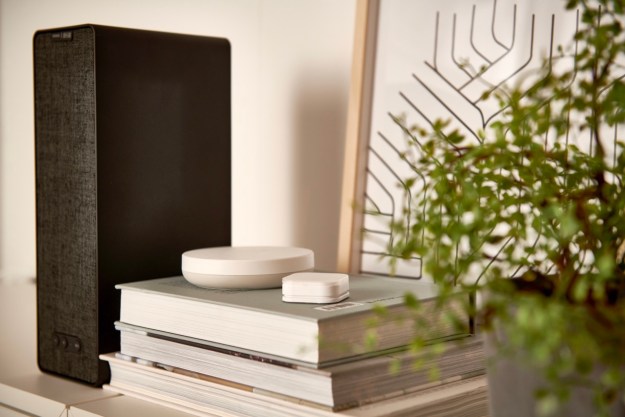Ikea might be best-known as the place to buy affordable furniture, but the company also has a surprisingly robust lineup of smart home products. The newest addition to the Ikea smart home family is the Vindstyrka smart indoor air quality sensor — a tiny device that measures particulate matter (PM2.5) — and it’s slated to arrive this April.
The upcoming Vindstyrka air quality sensor features a minimalist, rectangular design that offers nothing more than a few buttons and a simple display highlighting PM2.5 levels, temperature, humidity, and total volatile organic compounds (TVOC). The sensor is built to work all on its own, although you’ll get more mileage out of the device by pairing it to the Ikea smartphone app. Doing this will allow you to activate other devices based on the current air quality, including Ikea’s own Starkvind air purifier.

Beyond that, little else is known about the sensor. According to Henrik Telander, product owner at Ikea of Sweden, the company set out to create an “affordable, high-performing air quality sensor,” so don’t expect this device to carry a price tag that puts it at the high end of the market. Instead, it might align more closely with something like the Govee Smart Air Quality Monitor, which measures many of the same parameters and clocks in at $60.
The exact launch date for the Vindstyrka will vary by region, although Ikea is expecting to have it available in all markets by the end of April. That puts its launch date right at the start of spring — which is the perfect time to add an indoor air quality sensor to your home, as pollen and other allergens rapidly arrive with the sunshine.
Expect to learn more about the Vindtyrka air quality sensor — including exact pricing — as we inch closer to its release.
Editors' Recommendations
- Mila reveals a sleek new humidifier/air purifier combo at CES 2024
- Ikea launching 3 new smart home safety gadgets in 2024
- Is an air quality monitor worth adding to your home?
- Ring’s new indoor camera features a built-in privacy shutter
- 10 tips to make the most of your air purifier




